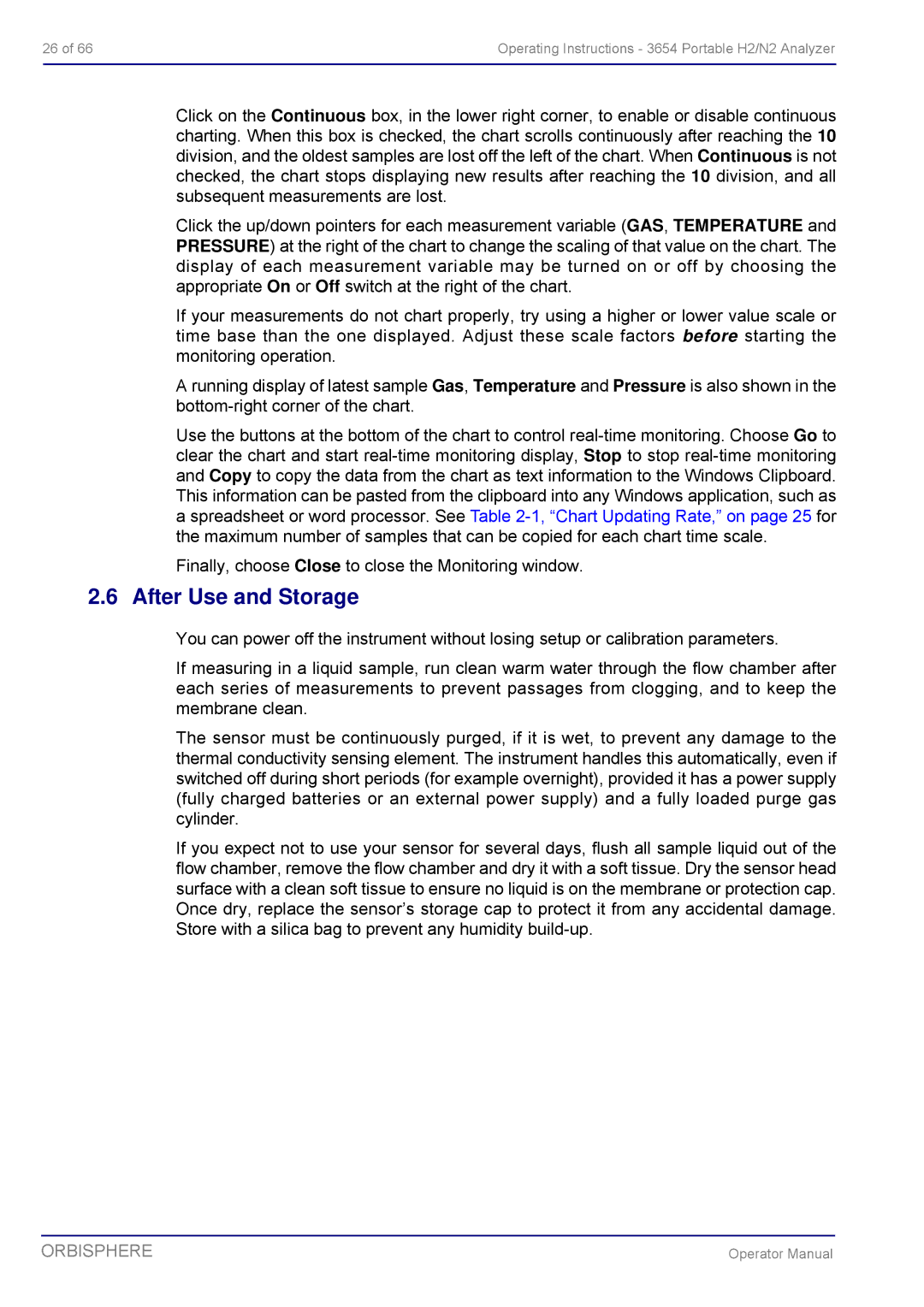26 of 66 | Operating Instructions - 3654 Portable H2/N2 Analyzer |
|
|
Click on the Continuous box, in the lower right corner, to enable or disable continuous charting. When this box is checked, the chart scrolls continuously after reaching the 10 division, and the oldest samples are lost off the left of the chart. When Continuous is not checked, the chart stops displaying new results after reaching the 10 division, and all subsequent measurements are lost.
Click the up/down pointers for each measurement variable (GAS, TEMPERATURE and PRESSURE) at the right of the chart to change the scaling of that value on the chart. The display of each measurement variable may be turned on or off by choosing the appropriate On or Off switch at the right of the chart.
If your measurements do not chart properly, try using a higher or lower value scale or time base than the one displayed. Adjust these scale factors before starting the monitoring operation.
A running display of latest sample Gas, Temperature and Pressure is also shown in the
Use the buttons at the bottom of the chart to control
Finally, choose Close to close the Monitoring window.
2.6 After Use and Storage
You can power off the instrument without losing setup or calibration parameters.
If measuring in a liquid sample, run clean warm water through the flow chamber after each series of measurements to prevent passages from clogging, and to keep the membrane clean.
The sensor must be continuously purged, if it is wet, to prevent any damage to the thermal conductivity sensing element. The instrument handles this automatically, even if switched off during short periods (for example overnight), provided it has a power supply (fully charged batteries or an external power supply) and a fully loaded purge gas cylinder.
If you expect not to use your sensor for several days, flush all sample liquid out of the flow chamber, remove the flow chamber and dry it with a soft tissue. Dry the sensor head surface with a clean soft tissue to ensure no liquid is on the membrane or protection cap. Once dry, replace the sensor’s storage cap to protect it from any accidental damage. Store with a silica bag to prevent any humidity
ORBISPHERE | Operator Manual |
